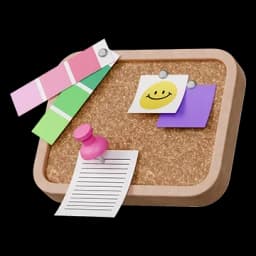My Background
I grew up in Bishkek, Kyrgyzstan, and studied at a public school - Gymnasium-complex Number 26. My early dreams of studying abroad were limited to nearby countries such as Russia and Kazakhstan. The idea of going further, especially to the United States, felt out of reach.
But everything changed in the 9th grade when I participated in a competition organized by Logos, an education company focused on helping students prepare and apply to top universities in the world. I won second place and received a 50% discount on their program. Then I told my parents about it. That was the first time my parents began to take the idea seriously. They saw how many doors this path could open for me, and we decided to give it a try.
It’s been four years since then, and now I’m a sophomore at Tufts University.
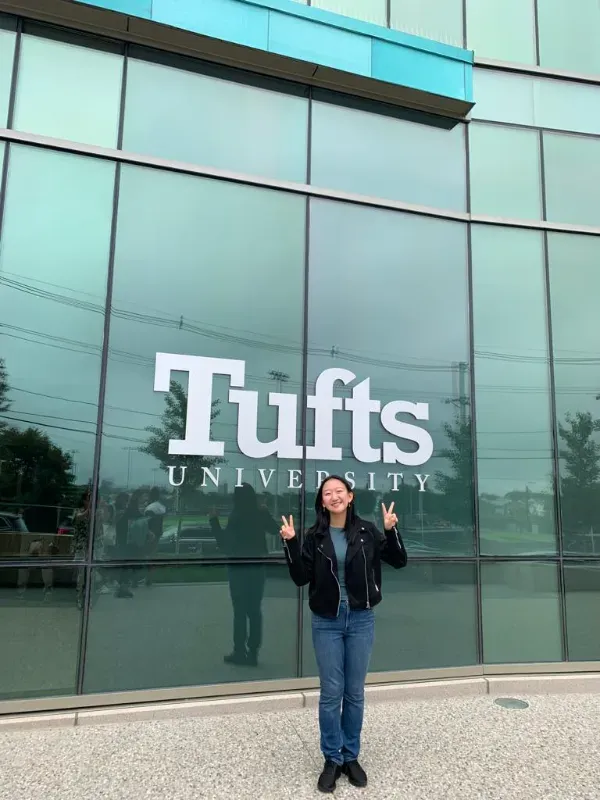
Why I Chose the U.S. Over Europe
When I was applying to universities, I limited myself to only two countries: the United States and the Netherlands. I was accepted to Erasmus University Rotterdam, and it was a tempting option. But the scholarship there (the Holland Scholarship) only covers up to around 15,000 euros, and it's a one-time offer. There is no need-based financial aid system like in the U.S., where they consider your family’s financial documents. In the Netherlands, even though the degree only lasts three years and might seem cheaper, the upfront costs can still be high for many students.
On the other hand, American colleges often offer full need-based financial aid, and I wanted the flexibility to explore different academic interests. That freedom is something U.S. colleges are known for, and it was very important to me. I wanted to take various classes, join extracurriculars, and get involved in research.
Applying to 24 Colleges Was Brutal but Worth It
The college application process was intense. I applied to 24 schools in total. My dream school was Northwestern University, near Chicago. I also applied to the University of Chicago, Washington University in St. Louis, Rice University, and many others.
Some of the schools I got into were Bates College in Maine, the University of South Florida, and the University of Miami. I seriously considered Miami, but the financial aid package wasn’t enough. I didn’t want my education to be a financial burden on my family.
Eventually, I chose Tufts University, and I have no regrets. It had everything I was looking for. The psychology program is excellent, the financial aid was generous, and the overall environment felt right for me.
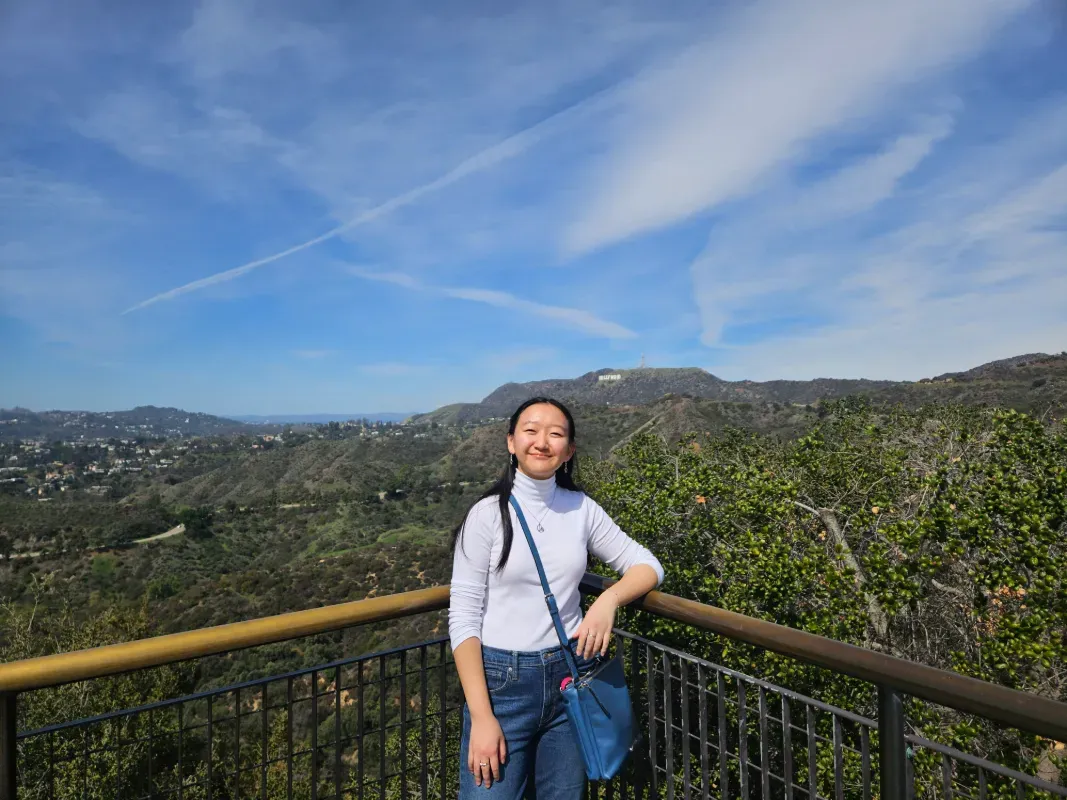
What I Love About Tufts
At Tufts, I’m doing exactly what I had hoped to do in college. I’m involved in three research labs because I’m thinking about pursuing a PhD in clinical psychology. Research has always fascinated me, especially in behavioral sciences. The access I have to research and mentorship here has been incredible.
One thing that really surprised me was the relationship between students and professors. Back home, and even in some European universities, there’s often a big gap between professors and students. But at Tufts, professors truly want you to succeed. They are open, kind, and willing to help. I’ve never felt afraid to ask questions, and that’s made a big difference in how much I’ve learned and grown.
The location is also a huge bonus. The campus is very close to Boston—there’s a train station right on campus. I can be in the city in just 30 minutes. I didn’t want to study in a rural area, which is common for many U.S. colleges, so having access to a big city was important for me.
The Kind of Students You’ll Meet at Tufts
One thing I’ve noticed is that students at Tufts are very high-achieving, but also very supportive. There’s no toxic competition. People here are humble and collaborative. You could be having lunch with someone and only later find out they interned at Microsoft last summer. They don’t show off, and that’s something I really value.
If you're looking for a party school, Tufts probably isn’t the place. But people still manage to have fun and balance social life with academics. You can definitely find your people here: whether they’re into birds, painting, flute, or anything else. Tufts has a lot of well-rounded students.
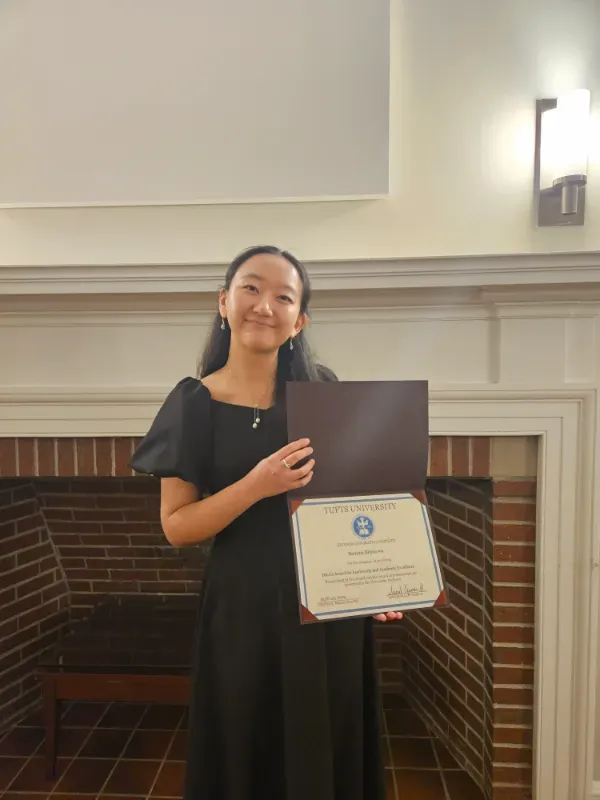
My Stats and SAT Advice
In high school, I had a 4.0 GPA. My IELTS score was 7.5. I took the SAT twice. My first score was 1380, and the second was 1500 (720 - English; 780 - Math)
For those preparing for the SAT, my advice is to focus on what you can improve in the least amount of time. As for the resources, I used the College Panda SAT books. I went through the table of contents, rated each topic from 1 to 4 based on my competence, and focused first on the 4s, the topics I was weakest in.
For SAT English, I recommend both active and passive preparation. Active means doing practice tests and studying. Passive means surrounding yourself with the kinds of materials that resemble SAT content (old fiction, science articles, and historical texts). And I also recommend going through the Khan Academy Digital SAT course.
Financial Aid
My financial aid covers tuition, health insurance, and a portion of room and board, but not a full ride.
Extracurricular Activities
Through the lens of my college years, I've come to understand that I was never the typical "spike" student profile—the kind of applicant who focuses on one thing for many years and becomes an expert, like in sports or Olympiads. Instead, I was someone with many interests. I’d call myself well-rounded. And I think that’s one reason Tufts appealed to me, and maybe why I got in. Tufts values diversity, not just in background, but in interests, perspectives, and life experiences.
So, regarding my extracurricular activities, everything I did felt meaningful in a different way, even if they didn’t all “rhyme” with each other. Looking back, I can see three major areas that shaped my high school life.
The first was mental health advocacy. I helped coordinate Tell Us Your Story, a small nonprofit in Kyrgyzstan aimed at raising awareness about mental health among teenagers. We hosted seminars, events, and discussions. Many of them were the first of their kind in our community. In Kyrgyzstan, mental health is still a very stigmatized topic, so our goal was to break some of that stigma and help teens feel more comfortable seeking support, even if it wasn’t professional. This was the most important activity to me, and I even wrote my personal statement about it.
The second was a debate. I was part of a debate club in Bishkek where I earned multiple awards, including one from an international competition. Beyond competing, I also mentored new debaters who joined after me. I kept track of how many people I trained, the number of sessions I held, and how many attended. I tried to present everything clearly in my application: how many people we reached, what topics we covered, and the impact we had.
The third was my creative side: video editing and photography. I started editing videos in 8th and 9th grade and kept going until graduation. I had a fan account where I posted character edits and even collaborated with other editors from around the world. That was one of the most fun parts of high school. I could sit for ten hours straight editing a video and still feel excited about it. It never felt like work.
Finally, I was also part of OYDO, another nonprofit I started with friends. This one focused on education. We ran webinars on college admissions, personal statement writing and hosted boot camps. One of the most heartwarming parts was that we had students from all seven regions of Kyrgyzstan join. We also had non-traditional classes like genetics, aerospace engineering, and video editing, which are the fields that many Kyrgyz students usually don’t get exposed to in public schools.
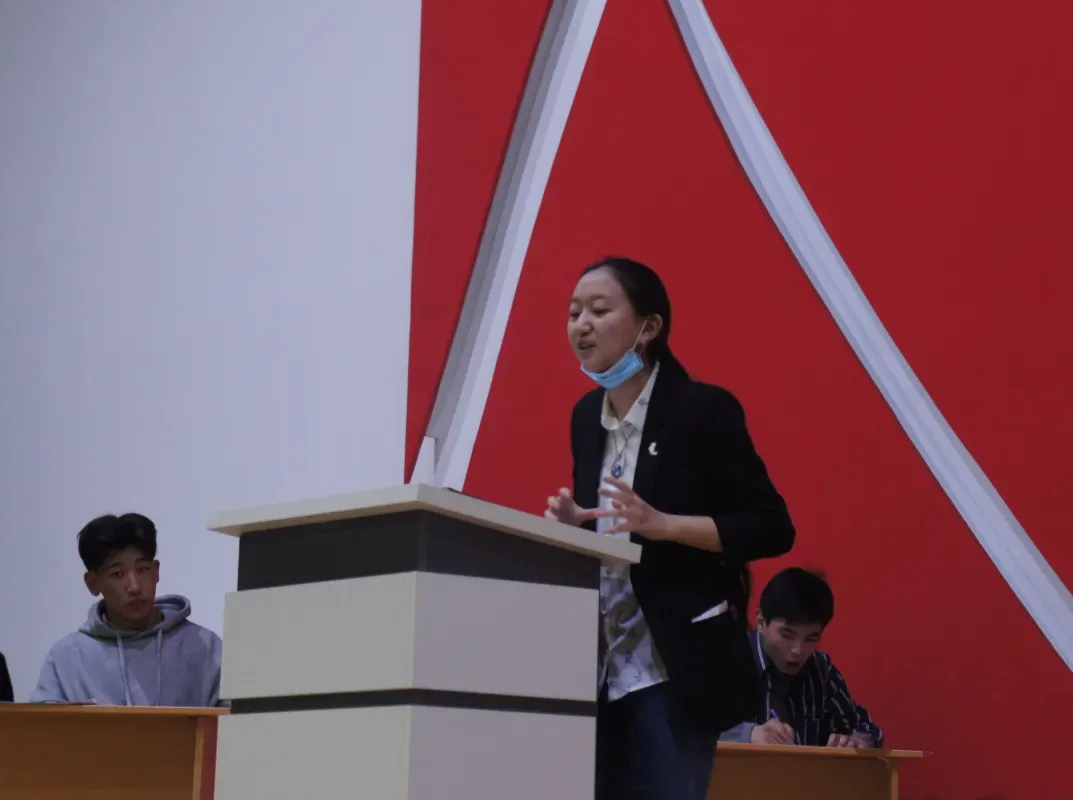
Academic Achievements That Helped
Besides activities, I also had some academic honors. I got first place in the Bilimkana Republican English Olympiad. I also got an honorable mention in an international essay competition. Additionally, I was selected to participate in a bioinformatics bootcamp hosted by Moscow Institute of Physics and Technology in Russia.
How I Managed My Time (or Didn’t)
If I’m being honest, I don’t think I managed my time that well. By the time the college application season ended, I was completely burned out. But I was lucky in some ways. Because I had been at my school for a long time, many teachers knew me and tried to meet me halfway. They let me complete extra assignments at times that fit better with my schedule. I know this isn’t something everyone can count on, and I’m really grateful for it.
Also, not all of my activities were year-round. For example, with OYDO, we only had to do the heavy lifting when events were coming up. So I just had to be smart about when things needed to get done. I made task lists, set priorities, and tried to follow them.
Now that I’m in college and still juggling responsibilities, I use Google Calendar a lot. Some people use Notion or even journals. It doesn’t matter what tool you use, as long as you use something. I block out time for meals and rest too, because skipping those never ends well. It’s better to eat and sleep than to keep working nonstop and crash later.
One more important thing that helped me was delegating. I’ve met many people who struggle because they don’t know how to ask for help or share their workload. But working in a team means collaborating. It's more about adjusting to what works best for everyone than just dividing tasks. That’s something I had to learn and continue to practice.
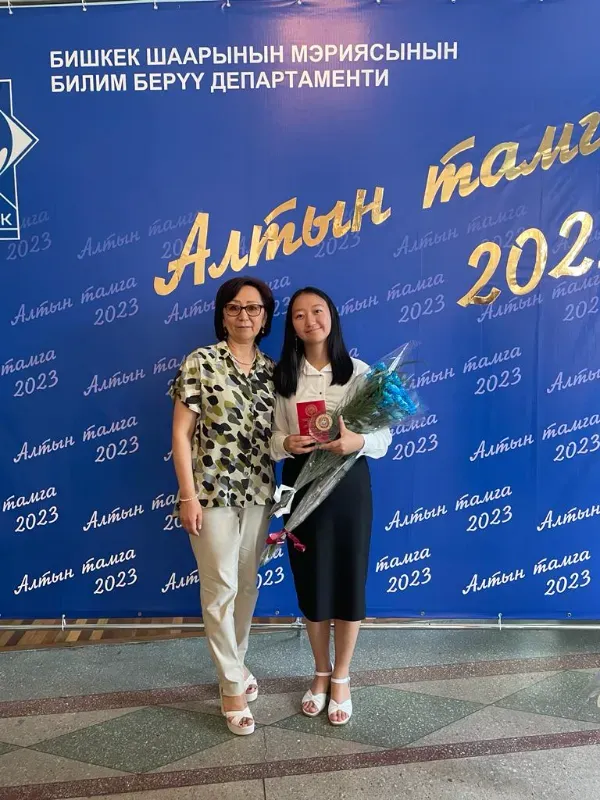
Don’t Just Copy—Choose What You Love
I know a lot of students see successful applicants and think, “Maybe I should do the same activities.” But that’s not how it works. I survived high school and enjoyed my activities because I genuinely loved them. Debate? I lived for it. I spent all my weekends at tournaments. Video editing? I was obsessed. That’s why I could do so much without giving up.
I also tried Model UN, but I didn’t enjoy it as much, so I dropped it. And that’s okay. Part of the process is figuring out what you like and what you don’t. That’s how you find what’s worth committing to. Only then can you take an activity to the level where it really matters in your application.
All the things I did, from editing films to working in education, were ways for me to explore who I wanted to be. Eventually, by the end of 10th grade, I realized I wanted to become a clinical psychologist. That decision came from combining my love for mental health work and my enjoyment of analytical thinking in debate.
So my advice? Try things. Explore. Reflect. And when you find what you love, go deep. That’s how you build a story worth telling.
Writing My Personal Statement: A Story Through a Photograph
When it came time to write my personal statement, I didn’t rush. It’s hard to say exactly how long it took, but I had structured moments for reflection. I would give myself around two weeks to write a draft, then meet with my mentor to go over it. In total, I went through four to six drafts. I was very lucky. Right from the beginning, I found an idea that both my mentor and I believed in.
My inspiration came from a concept I had learned about through reading many college essays, especially those that used what some people call “essence objects.” It’s the idea that a single object can represent something much deeper about who you are. For me, that object was my camera.
I built my essay around a creative structure. I imagined a “museum of memories,” and walked the reader through one particular photograph that had stayed with me for years. At first, this photo brought painful feelings. It wasn’t exactly traumatic, but it left me with discomfort and sadness. Over time, though, that memory changed for me.
Attending my first event with the mental health organization, Tell Us Your Story, helped me see that photo—and the memory it held—in a new way. I came to appreciate it, not just for what it captured but for the strength it took to confront it. That shift made me want to help others do the same: to look at their own stories differently, to find beauty and resilience in what they’ve lived through, and to tell their stories with pride. That was the heart of my personal statement.
Advice for Writing Your Personal Statement
If you’re starting your personal statement, my biggest advice is: be genuine. A lot of students, especially after reading examples in books like 50 Successful Harvard Essays, try to force deep meaning onto random objects. It ends up sounding cheesy if you don’t truly feel connected to what you’re writing about.
Start by thinking about your real experiences. Look through your memories. Is there a moment, an object, or a feeling that says something important about who you are? Maybe it’s a book you received as a gift that made you fall in love with reading, which then led you to philosophy or writing. The possibilities are endless, and they don’t need to be dramatic. What matters is that they are true to you.
It’s also important to remember: just because someone gives you feedback doesn’t mean you have to change everything. When I shared my drafts, I got a lot of opinions: some helpful, and some... not very kind. That hurt, especially because personal statements are, well, personal. But I learned not to take every comment at face value. Instead, I looked for patterns. I called them “sharp angles”, places where multiple people pointed out confusion or controversy. I worked to smooth those out without changing the core of my story. For example, when someone asked for more examples of what actions I took after the event, I added a few sentences to show that, but I kept the emotional heart of my essay intact.
So don’t turn your story into a mix of other people’s ideas. Keep it yours. Listen to feedback but filter it through your own voice. Be brave enough to share your truth and wise enough to protect it.
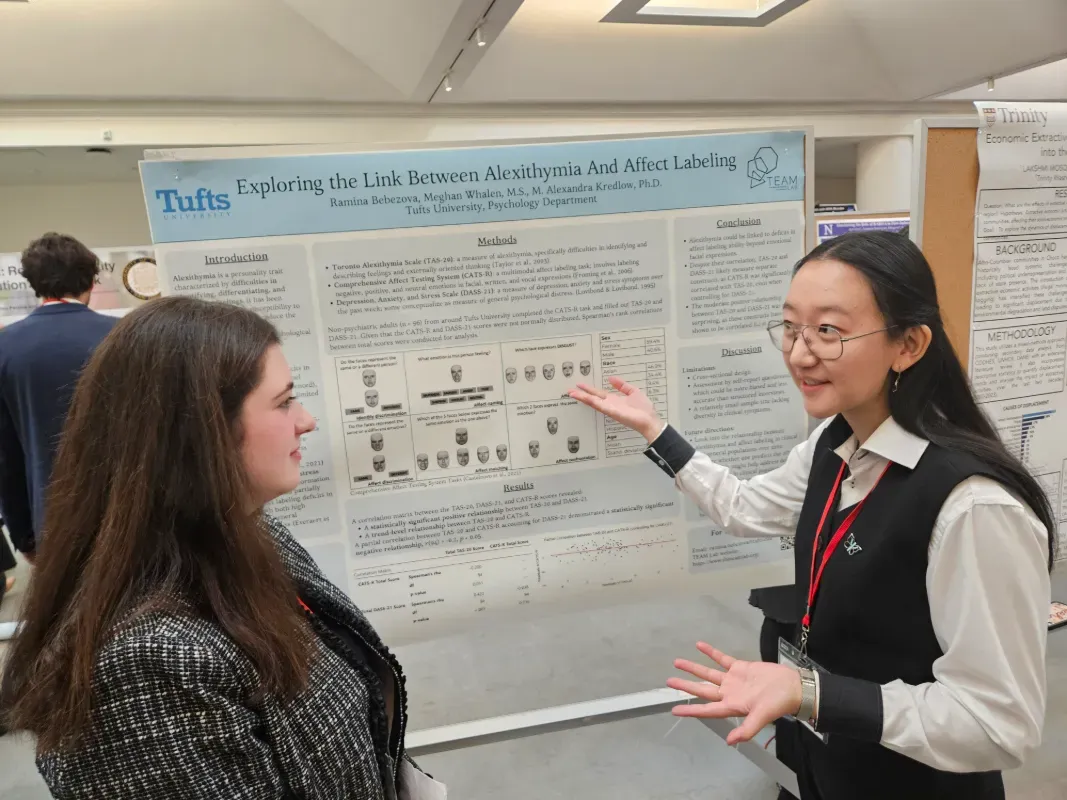
A Fun Tradition from My University
Here's a fun fact about my university. Like many U.S. colleges, we have a mascot. We're called the Jumbos, named after Jumbo, the famous elephant from the Barnum Circus (yes, the one you might know from 'The Greatest Showman').
P.T. Barnum, the circus's founder, was actually a trustee of Tufts College. After Jumbo died, Barnum donated the elephant's actual body to the university, and it was displayed in a campus museum for years. Sadly, that museum later burned down. Remarkably, someone collected Jumbo's ashes and kept them in a peanut butter jar, which is still here today!
Now, there's a statue of Jumbo on campus, and every student takes photos with it during tours. I haven't seen the famous peanut butter jar yet, but I've definitely taken my picture with the statue.
This is one of the things I love about U.S. colleges. Each one has its own strange and wonderful traditions. It reminds me that behind all the essays, deadlines, and dreams, there’s also joy, curiosity, and community.
My First Week: Exciting and Difficult
My first week at Tufts was very exciting, but also difficult. I liked my classes, especially Intro to Psychology. I felt like I was finally studying what I had always dreamed of. But it was also overwhelming. For instance, my French class was intense. And I had five classes in total, so everything felt fast and stressful.
It was also hard to adjust to life in a new country. I had imagined how it would be, but it still felt different. I had to get used to living with a roommate, to a new education system, and to doing everything in English. I felt homesick.
I was the only Dungan student on campus, maybe even in Boston. At first, it was hard always having to explain who I was and where I came from. But over time, I started seeing this as something positive. It helped me stay connected to my roots and even feel more Dungan than I did back home.
Outside the Classroom
Outside of academics, I enjoy going to Boston sometimes alone, sometimes with friends. I like trying new restaurants, going to exhibitions and museums, or just walking around. When the weather is good, I walk along the river or go to a park.
I’m also involved in Tufts Active Minds, a mental health student club. I serve as the events coordinator. We hold regular meetings and plan events to raise awareness. Mental health is an important topic for me, so I feel lucky to be part of this club.
My First Research Jobs
Research has become a big part of my life. I currently work in two psychology labs.
The first one is the Translational Emotion and Memory (TEAM) Lab. We are working on a collaborative study with Harvard about memory and emotions in people with social anxiety. I help set up equipment, talk to participants, and analyze fMRI brain scans. I also helped with a research paper and got to attend a psychology conference in Boston.
I found this job during my first semester, while checking the Psychology Department’s website. The lab wasn’t hiring, but I emailed them anyway. A month later, they contacted me saying they had a position open. That’s how I got my first job.
The second one is the Pets and Well-being (PAW) Lab. We are studying teenagers with social anxiety and how having a dog may help them. I help with data coding, gift card distribution, and contacting families. I found this job on Handshake (a career platform designed to connect college students and alumni with employers for job and internship opportunities) and joined in the summer.
Both jobs have given me amazing opportunities. I work with graduate students and professors who have taught me a lot. I now know that I want to do research in the future.
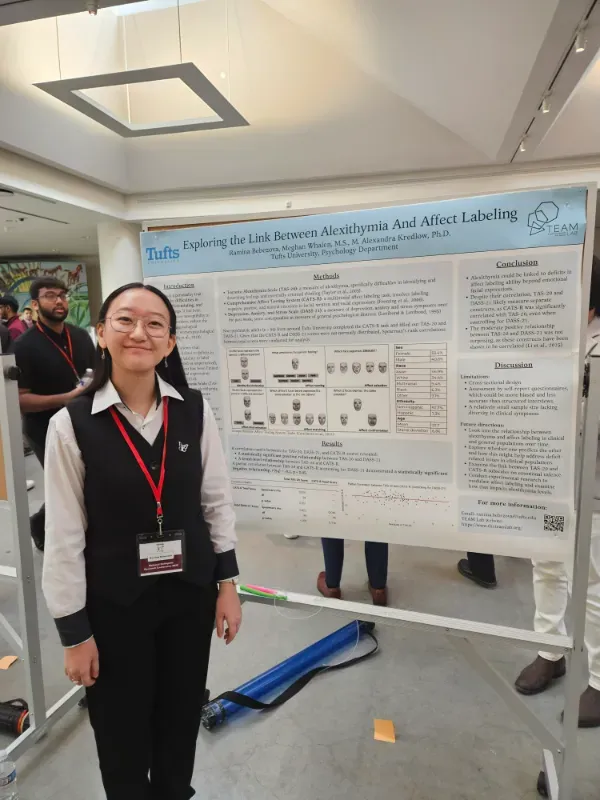
My Favorite Class
One of my favorite classes so far has been “Children and Mass Media.” We discussed how the media affects children’s development. One of our assignments was to analyze a type of media. I chose Soviet cartoons, the ones I grew up with.
I studied gender and family roles in them, looking at who does the cleaning, who expresses emotion, and who the main characters are. I found that household chores and emotions were equally shared between male and female characters, but most main characters were still male.
This class was special for me. It helped me reflect on the media I watched as a child, and how it shaped my thinking. It also allowed me to connect academic psychology with my culture and post-Soviet upbringing.
What I Want to Do Next
My goal is to get a PhD in clinical psychology. I want to become a psychologist who helps people but also does research. I want to combine both: practical work with patients and scientific research in a lab. Being at Tufts has shown me that it’s possible to do both. I’m excited to keep going on this path.



